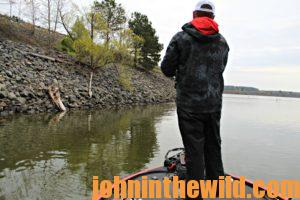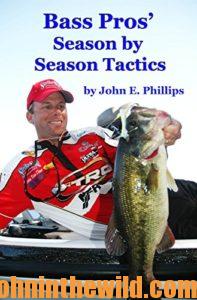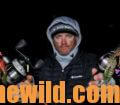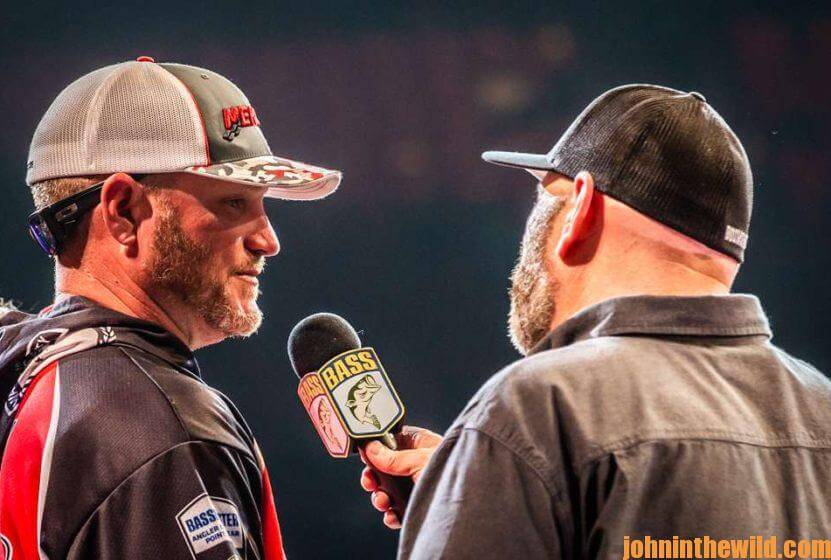Editor’s Note: Very few of us know what we want to be when we finish high school, and some people don’t have a clue of what they want to become even after getting their college educations. And, these two statements are typical about the 2020 Bassmaster Classic (https://www.bassmaster.com/) winner Hank Cherry of Lincolnton, North Carolina, on the shores of Lake Norman. But in his heart of hearts, he knew he wanted to earn a living bass fishing. However, life takes twists and turns, and few men or women reach greatness without traveling through discouragement and failure. Actually in most people’s lives, failure is a prerequisite to success, and such is the backstory of Hank Cherry.
Once I caught my first bass at the Lake Guntersville 2020 Classic, I put my Panoptix LiveScope (https://buy.garmin.com/en-US/US/p/591379) down on the end of my trolling motor and spotted  bait fish suspended out away from the riprap and the bass suspended too. That’s when I decided to fish the jerkbait in the water depth through which I wanted that jerkbait to swim. I decided with the bad weather coming in that the jerkbait should be the best lure of choice to fish the causeway.
bait fish suspended out away from the riprap and the bass suspended too. That’s when I decided to fish the jerkbait in the water depth through which I wanted that jerkbait to swim. I decided with the bad weather coming in that the jerkbait should be the best lure of choice to fish the causeway.
The lure and the place I fished weren’t the only keys to my win. My Garmin ECHOMAP Ultra 126sv (https://buy.garmin.com/en-US/US/p/626322) and my Panoptix LiveScope enabled me to determine the lure I should use and the depth I should fish. The mapping feature showed me the subtle drops off the causeway on the mapping screen, and my LiveScope enabled me to see in front of my boat where boulders slid down the causeway to the bottom, and where the bass were suspending. I could see the depth at which the bass were holding. I saw the depth at which the gizzard shad that the bass where feeding on were positioned too, so I felt if I kept close enough to those underwater boulders at the depth where the bass were holding, the bass should bite.
I’m often asked, “Why do you run four depth finders on your boat?” I have two on my console and two on my casting deck. I use the two on the console for side scanning. I want my depth finders  to be full screen. On my right side, I want the depth finder to scan the right side of the boat, and the depth finder on the left console to scan the left side the boat. Of the two depth finders on the front of my boat, I have one that is a full-screen map and the other that’s my LiveScope. I rarely, if ever, use 2D sonar (bottom scanning under the boat) because I can use my LiveScope to see the bottom also.
to be full screen. On my right side, I want the depth finder to scan the right side of the boat, and the depth finder on the left console to scan the left side the boat. Of the two depth finders on the front of my boat, I have one that is a full-screen map and the other that’s my LiveScope. I rarely, if ever, use 2D sonar (bottom scanning under the boat) because I can use my LiveScope to see the bottom also.
On tournament days, I always have the two depth finders on the front of my boat running the entire time I’m on the water. “I’ll have the mapping function up on the back depth finder. Depending on how windy the day is and the clarity of the water, I like to pan out with my LiveScope from 70-100 feet in front of me, around me and on the bottom. I don’t need total clarity; I just need to see the markings of the fish I’m trying to fish for and learn how they are reacting to my bait as it moves past them.
Luckily, no-other competitors were fishing the causeway during the 2020 Classic but me, except on the final day, when two other competitors came in and started fishing there. Although that move surprised me, the fishermen only fished a little while and then left.
To learn more about catching bass, check out John E. Phillips’ book, “Bass Pros’: Season by Season Tactics”, at https://amzn.to/2IKUhe available in Kindle and print versions and Click here for the Audible link.
Tomorrow: Hank Cherry’s 2020 Classic Lures and Tactics










